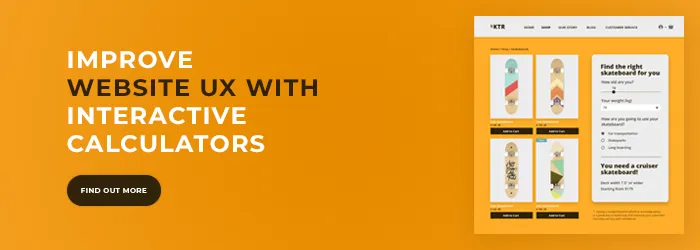Tips for Providing a Better User Experience for E-commerce
| Last updated

Advancements in technology have changed how people do things. From shopping to learning and entertainment to finding news, everything is available online. These advancements have greatly impacted the business landscape. Today, almost every business has an online presence. This means more competition as companies seek to attract and retain the most online clients.
If you run an eCommerce business, your clients expect an excellent experience when in your eCommerce store. Every customer desires a quick, easy, and informed purchasing path.
If customers experience issues with the purchasing process while in your eCommerce store, you are likely to have a high cart abandonment rate, which affects your bottom line.
Delivering a seamless shopping experience is the key to closing sales and retaining clients. Here is how you can provide the best user experience for your eCommerce store.
What is E-commerce User Experience?
User experience (UX) is simply how a user feels after interacting with a product, system, brand, or service. Ecommerce user experience is simply the overall experience customers have when interacting with your eCommerce website or store. It also refers to how website visitors feel when scrolling through an online store, depending on how easy or hard it is to find products or perform different actions on mobile and computer devices.
How to Make a Great E-Commerce User Experience
Create product recommendations

You need to guide your potential clients using personalized product recommendations. This makes it easy for them to find their preferred product while discovering new options. According to Muchneeded.com, this has the potential of increasing their order value while delivering an excellent user experience.
For instance, you can set up your system to offer recommendations for similar products to clients by showing what other clients bought alongside the product they want to buy. This gives the client access to other products they probably needed but was not thinking about.
You can also recommend products under trending products or bestseller sections. These are ideal because they offer social proof, making the customer trust the options more since other users found the products useful.
Upselling and cross-selling products are also excellent ways of using product recommendations to deliver a great user experience on your eCommerce site. You can display similar products of higher quality to upsell or display complementary products that can enhance the product experience to cross-sell.
Lastly, if the product choice depends on more technical aspects, you can add interactive widgets that will show a personalized recommendation of the right product according to their needs. Such widgets can be quizzes, interactive calculators or forms. But we'll get into more detail on that later in the post.
Optimize product pages for conversions
Ecommerce is meant to make buying products or services easier than queueing at a brick-and-mortar store. Along with highly detailed product pages, you also need to optimize these pages for conversions. This means making the checkout process as seamless as possible to reduce cart abandonment. When you have an easy checkout process, the customer is more likely to close a sale and even come back for a seamless checkout experience.
When a transaction process is difficult, a client is likely to abandon their cart and never return to a site. If you are looking to improve your eCommerce store user experience, you need to ensure a client can easily check out from a product page right after clicking on buy.
While you may be looking to upsell or cross-sell, your product pages should not be cluttered with ads and product options. The path to closing the sale should be clear and easy, with minimal distractions. Once the sale is closed, you can go ahead and display your cross-sale and upselling products to see if the client may be interested.
To optimize your page for conversions:
- Ensure the page loads fast
- Ensure your product page design can engage the visitor at a glance
- Give the lead enough information about the product on the page, i.e. price, shipping cost, etc.
- Use high-quality product images
- Tell the lead about your brand and how the product can be of benefit
- Have an easy checkout process and display the checkout button on the product-page

Provide usable navigation and smart search
The speed, site architecture, and ease of searching for products all play an integral role in the user experience delivered by any eCommerce store.
Lack of a search bar, a slow website, and sloppy architecture contribute to navigational lags on an eCommerce store, leading to a bad user experience. The more your site lags, the higher your bounce rate will be. Ultimately, this affects your SEO and eCommerce conversions.
To avoid navigation issues, you need to make technical improvements on your site to ensure every click works. You also need to ensure your website can load and work fast on all devices, especially mobile devices. To make the experience seamless, you can integrate smart search options for improved speed and efficiency when finding products.
Mobile usability is no longer an option function for eCommerce sites. With more than 77% of all shoppers doing their shopping from their handheld devices, you want to ensure your eCommerce site is optimized for mobile devices to get a share of this market value. Failing to optimize your website for mobile devices will mean you deliver a bad experience to mobile device users, therefore missing eCommerce sales.
Create Trust with Transparency
A transparent website makes it easier for potential customers to trust it, thus delivering a better user experience. Displaying all product information, company policies, cost, and shipping protocols on your eCommerce product pages give customers all the details they need on a product in one place, thus helping to inform their purchasing decisions. By doing so, you deliver a comfortable and enhanced user experience.
When it comes to transparency, your product pages should deliver utmost transparency for driving conversions. The most important information to display on your product pages includes the product material, product images, special instructions, the material, actual cost, shipping costs and guidelines, benefits of the product, and any other product details that may be relevant. Ensure you also include trust seals on the website footer and in the checkout pages to foster trust.
Offer virtual assistance
Part of giving the best user experience is to give your customers the attention they demand. One of the best ways to do this is by having a clear virtual line of communication where your clients can report, review and consult with your store. Promptness is important while offering assistance, which calls for 24/7 availability where possible.
Part of delivering the best user experience is ensuring your customers can get the help they need without following a long chain of command. Your customer service team should be equipped with the information to answer questions and address concerns promptly.
The best way to deliver excellent virtual assistance to your clients is to be available round the clock by email, chat or call. You can ensure that your clients have access to help whenever they need it by including an instant chat feature on your website and being available on your social media pages to answer questions and address concerns.
Enhance customer support with an interactive calculator
Ensuring you have interactive content on your e-commerce website is an excellent way to attract the right audience, keep them on your page for longer, and boost sales. This can be made possible using an interactive calculator.
Interactive calculators are online tools that can be used through a visitor’s journey on a website as it directs them to the bottom of the sales funnel. This tool calculates the visitor's needs based on data to give them a fully customized user experience.
With an interactive calculator, your e-commerce website can deliver great value to your leads by offering specific answers to their specific needs. This can include calculating how much they save from using your service or how much they stand to gain from subscribing to a service.

More interactive calculator examples for e-commerce stores:
- CBD dosage calculator
- Wallpaper quantity calculator
- CO2 emission calculator
- Custom poster price calculator
Using an interactive calculator on your site is also an ideal way of learning more about your clients' needs, which can help you determine the best way to communicate with them.
For instance, if you run a travel agency, your interactive calculator can be designed to make it easy for your visitors to calculate the cost of their trip. To do so, they will need to give more details about their budget and trip ideas. With this information, you can create a personalized experience for clients to meet their individual needs.
Using an interactive calculator for your e-commerce website can help the customer know the cost of the items they want to buy by calculating the total cost, offering a realistic expense estimate. This improves their experience since it takes away the need to calculate the total cost from their end.
Apart from offering helpful information and converting leads, an interactive calculator can also be used to enhance a site’s link-building efforts. When your calculator provides high value to visitors, other sites can cite your website as a resource, therefore boosting organic traffic and brand image.
Conclusion
With new eCommerce stores coming up every day, the only way to survive in the digital business space is by ensuring you make new lifelong customers and keep the old ones coming back. All this is possible with the best user experience. With the tips in this article, you have everything you need to deliver the best UX in eCommerce.
Subscribe to our newsletter!

